A01_WEBSITE_LINK.docx 
NAPLES
A city of a thousand contradictions

"Naples, what a curious city! Ancient theatre, forever open. People born here simply act in the streets with no training"
With these words, strictly in vernacular, the great Neapolitan actor and playwright Eduardo De Filippo describes the culture and folklore that characterize his city.

Naples actually is a city by manifold contradictions. Hard neighborhoods, alternate with glimpses of a wonderful landscape, wrapped in the reassuring blue waves of thesea. Damned and blessed, protagonist and antagonist for those who love her, Naples is the pride and blame of Southern Italy. Maybe because a work of art always needs a good interpretation to be appreciated. But despite all prejudices, those who taste Naples's essence, sadly leave the city, full of memories, feelings, colours and the desire to come back as soon as possible.
“Vide Napule e po' muore!” (behold Naples and then, die!) says a Neapolitan proverb which means that you must visit Naples at least once in your life. Naples is the reversal of any clichés, it is the vertigo of the world. Naples is sadness torn by a child's smile, like a rainbow after a heavy rain. Naples is the magic hidden in every humble gesture, the scent of clothes hanging in the sun. Naples is an eternal upstream race to strive for happiness under the watchful eye of the good old Vesuvius. The climate and the natural and artistic attractions of this city highlight its beauty like a lovely jewel on a beautiful woman. A city that the world tries to re-evaluate despite the scars of a painful past. A city whose fate is in the hand of its patron, San Gennaro, and his miracles...
"I'm leaving. I shall never forget either Via Toledo, or any others parts of Naples; to my eyes this city has no equal and it is the most beautiful city in the universe."
The French writer Stendhal, the philosopher of the sublime, considered Naples the most beautiful and the warmest city in the world.
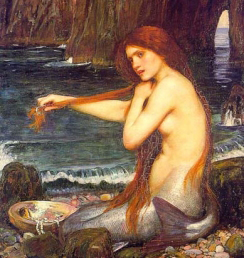 ♒ Did you know? ♒
♒ Did you know? ♒
According to a legend, in the beautiful gulf of this city, there is Parthenope's grave from where the name to the inhabitants, the so-called "Partenopei" derive. Parthenope was one of the mermaids who tried to seduceUlysses with her voice. As she did not manage, she threw herself into the sea and died. Her body washed up on the shores of Naples where some fishermen welcomed her as a goddess and would remember her forever.
Naples... in music! ♫♪ : Napule è (Pino Daniele, 1977)
 Napule è mille culure Naples is a thousand colours
Napule è mille culure Naples is a thousand colours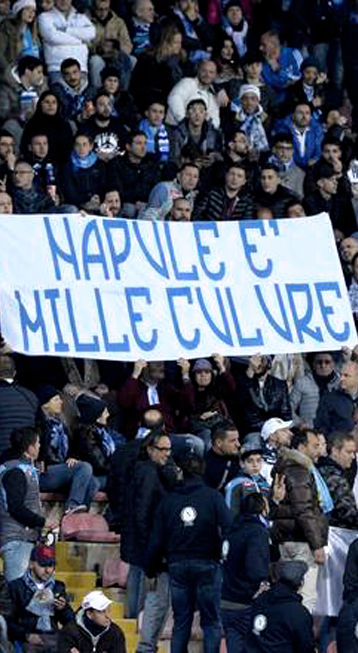
Napule è mille paure Naples is a thousand fears
Napule è a voce de' criature Naples is the children voices
Che saglie chianu chianu That rise very slowly
E tu sai ca' nun si sulo And so you know you're not alone
Napule è nu sole amaro Naples is a bitter sun
Napule è addore e' mare Naples is the smell of the sea
Napule è na' carta sporca Naples is a dirty sheet of paper
E nisciuno se ne importa And nobody cares about it
E ognuno aspetta a' sciorta And everyone is waiting for good luck
Napule è na' camminata Naples is a walk
Int' e viche miezo all'ate In the alleys among the crowd
Napule è tutto nu suonno Naples is a dream
E a' sape tutto o' munno And all the world knows it
Ma nun sanno a' verità But they don't know the truth
something about us...
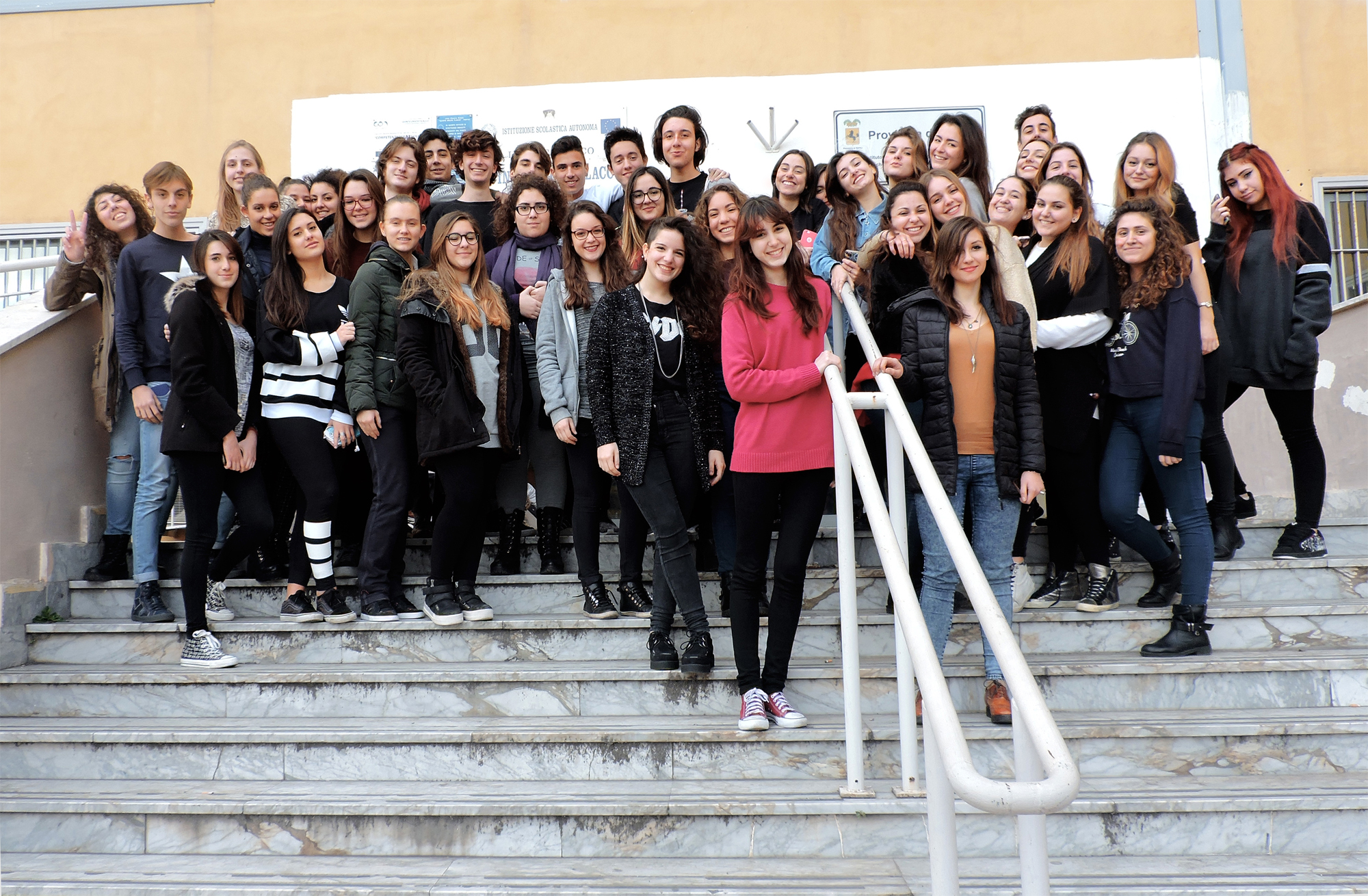
Quinto Orazio Flacco is a quite old high school in Portici(which lies about 8 km southeast of Naples) that currently offers three different school orientations: linguistic, classic and human sciences. It is certainly a school where study is the priority but also different activities are often arranged, which gives a more lively touch especially to the classical studies. Students are really a lot, but for the Erasmus+ only two lucky classes have been chosen: 3I (linguistic orientation) and 3D (classic orientation). These two different classes have immediately worked hard and with great enthusiasm on this project. With funny moments and a lot of collaboration between students and teachers, now Quinto Orazio Flacco is ready to host our exchange friends who will be with us in this fantastic experience!
... so, let's start this journey! ☀
▶ DAY ONE ——————
ONE PROVERB A DAY KEEPS NAIVETY AWAY! Neapolitan pearls of wisdom 💬
"Ògne scarrafòne è bbello à mamma soja."
All the beatles are their mums' beloved.
It means that every children, ugly or beautiful, is anyway perfect for their mum 😍 👶
___PIETRARSA___ Passenger in the rail time 🚈
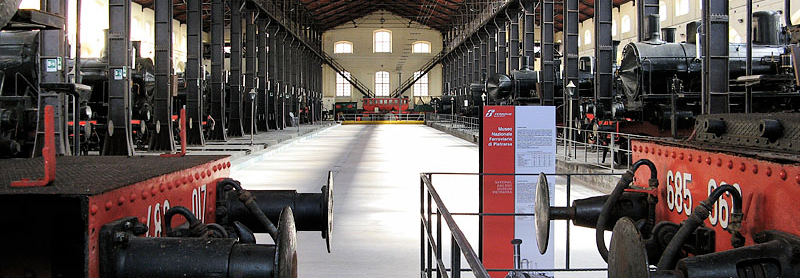 If you are thereabout Portici, you can't miss visiting Pietrarsa! It is one of the most important historical sites because it represents a bridge between the past and present that perfectly blends the Bayard with the sophisticated and super fast High Speed trains. From a more historical-architectonical viewpoint, the venue perfectly suits the intended purpose, as the museum is housed where originally the old Bourbon workshops were founded in 1840 at the command of Ferdinand II of Bourbon.
If you are thereabout Portici, you can't miss visiting Pietrarsa! It is one of the most important historical sites because it represents a bridge between the past and present that perfectly blends the Bayard with the sophisticated and super fast High Speed trains. From a more historical-architectonical viewpoint, the venue perfectly suits the intended purpose, as the museum is housed where originally the old Bourbon workshops were founded in 1840 at the command of Ferdinand II of Bourbon.
 That area was once called “Pietra Bianca” (White Stone) and then “Pietrarsa” (Burnt Stone), following a Vesuvius eruption whose lava reached that point on the coast. The Museum is one of the most important industrial archaeology centres and a national pole of railway culture in Italy. It has entered the circuit of the main railway museums of Europe. A really unique exibition both for the wealth of contents on show and also for the absolute affinity between the history of its architecture and the story it tells.
That area was once called “Pietra Bianca” (White Stone) and then “Pietrarsa” (Burnt Stone), following a Vesuvius eruption whose lava reached that point on the coast. The Museum is one of the most important industrial archaeology centres and a national pole of railway culture in Italy. It has entered the circuit of the main railway museums of Europe. A really unique exibition both for the wealth of contents on show and also for the absolute affinity between the history of its architecture and the story it tells.
➯ Naples to EAT 😜 👌 ...Casatiello
 Casatiello is a traditional Easter Neapolitan special bread, a rich"brioche" made
Casatiello is a traditional Easter Neapolitan special bread, a rich"brioche" made with eggs and butter and filled withcheese and salami. It celebrates the end of the lent period and the rebirth of Christ. Historically, the use of milk, eggs and sheep cheese symbolized the birth of Christ in the manger with the farm animals. The traditional way to prepare this bread is to top it with eggs that are secured with crosses of bread dough. This bread is often prepared for “Pasquetta”, or Easter Monday when Italians usually have trips and picnics with friends and family.
with eggs and butter and filled withcheese and salami. It celebrates the end of the lent period and the rebirth of Christ. Historically, the use of milk, eggs and sheep cheese symbolized the birth of Christ in the manger with the farm animals. The traditional way to prepare this bread is to top it with eggs that are secured with crosses of bread dough. This bread is often prepared for “Pasquetta”, or Easter Monday when Italians usually have trips and picnics with friends and family.
"Quann’ o’ diavulo t’accarezza, vo ll’anema."
When the devil caresses you, it wants your soul.
It means that a person shows itself like a generous and kind being only for its interest and benefit. 👿 💚
♛THE ROYAL PALACE OF PORTICI ♛
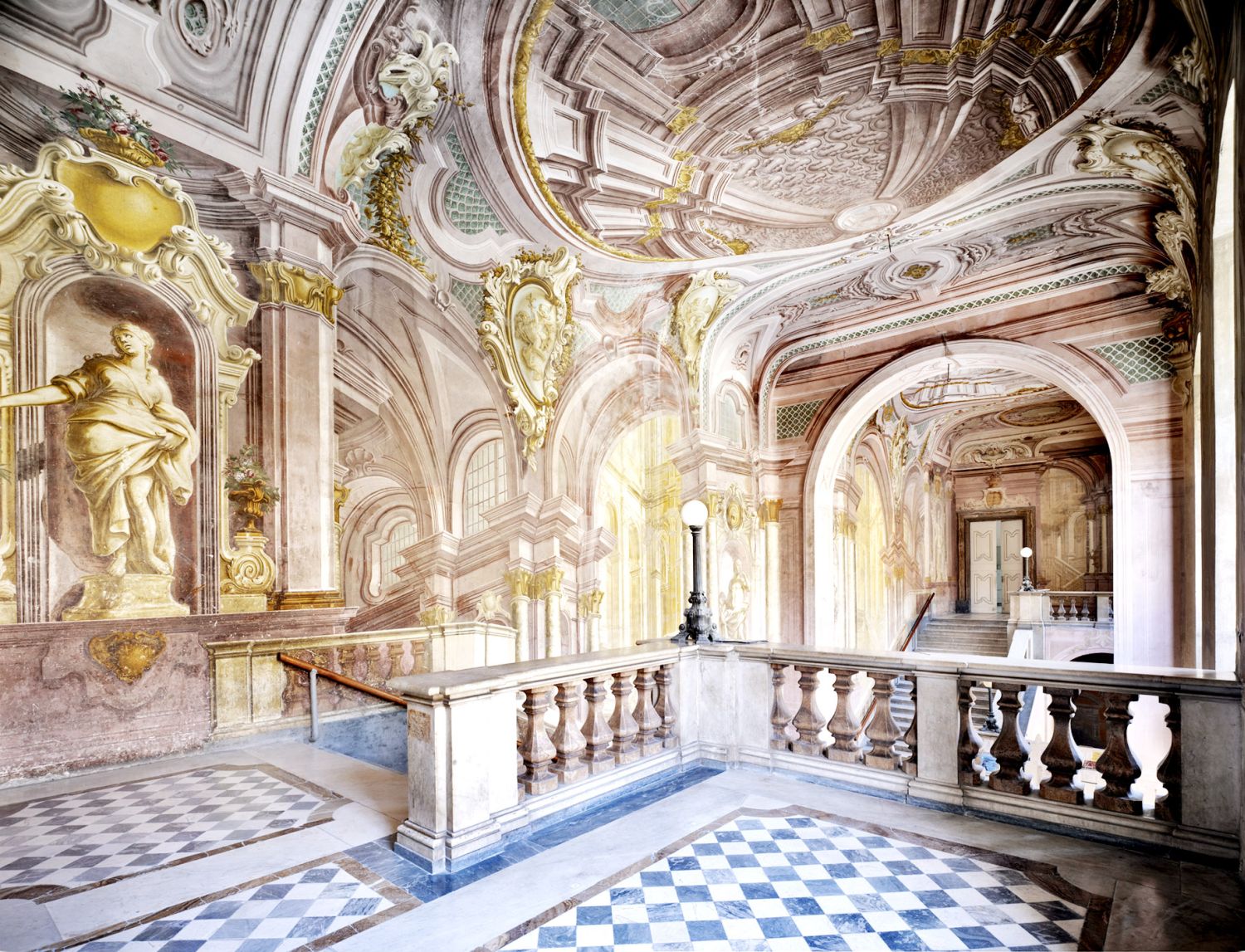 The Borboni's Royal Palace in Portici dates back to 1738 and has got a dense woods intended to the hunt and to ornamental use. The architect of this Palace, that keeps artifacts of ancient Ercolano, was Luigi Vanvitelli. In 1872 it became seat ofAgrarian University of Naples . With a quadrangular plan, it has got terraces and balustrades and it was cut in two by the old "Ways of Calabrie", that is now called Via Università. In the front yard there is the barracks of Royal
The Borboni's Royal Palace in Portici dates back to 1738 and has got a dense woods intended to the hunt and to ornamental use. The architect of this Palace, that keeps artifacts of ancient Ercolano, was Luigi Vanvitelli. In 1872 it became seat ofAgrarian University of Naples . With a quadrangular plan, it has got terraces and balustrades and it was cut in two by the old "Ways of Calabrie", that is now called Via Università. In the front yard there is the barracks of Royal  Guards and the Royal Chapel; from this yard it is possible to access, on the first floor, to the Carolina Bonaparte’s apartment, to the Luigi XIV’s sitting room and to the budoir of the Queen of Saxony. The wood that run from Ercolano to the sea has got lots of English Gardens and in the lower part it it is possible to admire an enormous carpet covered by grass that has replaced a stretch of woods.
Guards and the Royal Chapel; from this yard it is possible to access, on the first floor, to the Carolina Bonaparte’s apartment, to the Luigi XIV’s sitting room and to the budoir of the Queen of Saxony. The wood that run from Ercolano to the sea has got lots of English Gardens and in the lower part it it is possible to admire an enormous carpet covered by grass that has replaced a stretch of woods.
"Si ‘o giovene sapesse e si ‘o vecchio putesse… "
If the young man knew and the old man could…
It means that when you’re young, you are strong and you can do everything but you don’t have enough experience and when you’re old you have the right experience but you are not strong anymore.
ARE YOU CUЯIOUS? 🔎 Think about...
...Tarantella! 🎶 💃
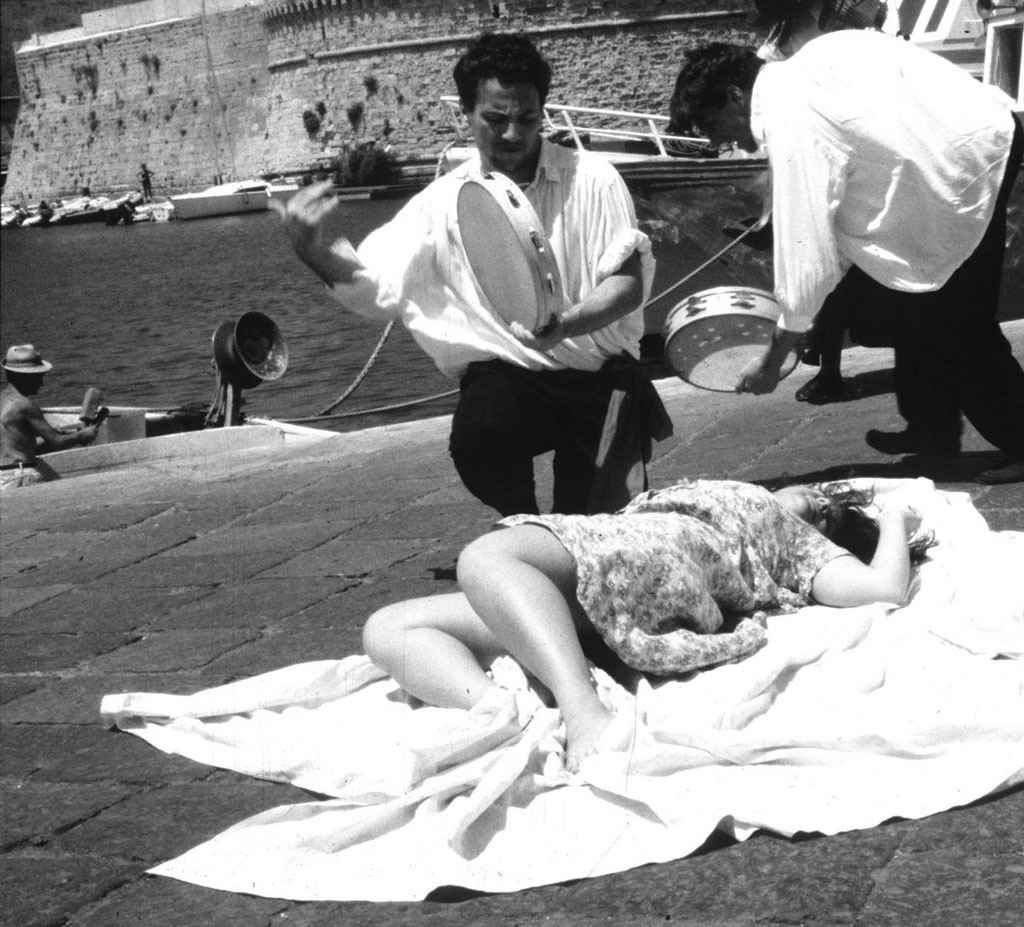 The term Tarantella refers to a group of folk dances and their corresponding melodies characterized by a fast upbeat tempo originated in Southern Italy in the early years of the 17th century. While tarantella as a dance developed in Naples, it actually evolved from ancient Apulian rituals performed to treat tarantism, a form of hysteric behaviour popularly believed to result from the bite of a spider. The tarantulees (almost exclusively women), who suffered from depression and convulsions, danced wildly in a trance to the sound of tambourines, violins 🎻 and harmonicas in order to "kill the tarantula" and expel its poison through perspiration. Till now it is not clear what tarantism was caused by. We could say that Tarantella, as we know it, which varies in name and (slightly) in features for every Southern region of Italy, is a more controlled version of those rites. Neapolitan Tarantella, danced to castanets and tambourines, was originally performed on the occasion of a birth, a wedding, or any other happy event. It was mandatory to perform it during grape harvest and religious celebrations. Nowadays Tarantella is traditionally danced during local festivals only, or as a part of a show.
The term Tarantella refers to a group of folk dances and their corresponding melodies characterized by a fast upbeat tempo originated in Southern Italy in the early years of the 17th century. While tarantella as a dance developed in Naples, it actually evolved from ancient Apulian rituals performed to treat tarantism, a form of hysteric behaviour popularly believed to result from the bite of a spider. The tarantulees (almost exclusively women), who suffered from depression and convulsions, danced wildly in a trance to the sound of tambourines, violins 🎻 and harmonicas in order to "kill the tarantula" and expel its poison through perspiration. Till now it is not clear what tarantism was caused by. We could say that Tarantella, as we know it, which varies in name and (slightly) in features for every Southern region of Italy, is a more controlled version of those rites. Neapolitan Tarantella, danced to castanets and tambourines, was originally performed on the occasion of a birth, a wedding, or any other happy event. It was mandatory to perform it during grape harvest and religious celebrations. Nowadays Tarantella is traditionally danced during local festivals only, or as a part of a show.
"Nu’ sputà ‘ncielo, ca nfaccia te torna."
Don't spit to the sky because it returns on your face.
It means that you should never judge someone for their idea or behaviour, because in the future you might do the same. 💦 🔙
▶ DAY TWO ——————
"Se dice o’ peccato, ma no o’ peccatore."
You may tell about the sin, but not reveal the sinner's name.
It means that to say the sin can be useful, but to say the sinner's name means to be a spy. 👮 🐍
🏰 MASCHIO ANGIOINO 🏰
 "Castel Nuovo", or also "Maschio (Male) Angioino", is a historic medieval and Renaissance castle, as well as one of the symbols of the city of Naples. The "Maschio Angioino" rises in the middle of the great square where also the Town Hall House is. On its right there are the Royal Gardens and theRoyal Palace. This strategic position was chosen by the sovereign Charles I of Angiò (to whom the first denomination is dedicated), who - occupied the city in 1266 – wanted an alternative residence to the preexisting Castel Capuano, and had the Palace built strengthened right near the sea. In 1442, the crown in Naples passed from the House of Angiò tothe Aragonese dynasty.
"Castel Nuovo", or also "Maschio (Male) Angioino", is a historic medieval and Renaissance castle, as well as one of the symbols of the city of Naples. The "Maschio Angioino" rises in the middle of the great square where also the Town Hall House is. On its right there are the Royal Gardens and theRoyal Palace. This strategic position was chosen by the sovereign Charles I of Angiò (to whom the first denomination is dedicated), who - occupied the city in 1266 – wanted an alternative residence to the preexisting Castel Capuano, and had the Palace built strengthened right near the sea. In 1442, the crown in Naples passed from the House of Angiò tothe Aragonese dynasty.
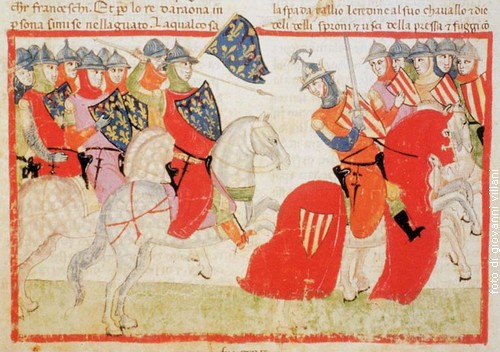
To celebrate the success and the power of the Aragonese dynasty, the sovereign wanted to decorate the main entrance to the castle with a monumental white marble arch, considered one of the most remarkable works of the Italian Renaissance. The room that inside takes the name from an episode of 1486, is the Barons Hall. The king, in fact, called for all the barons of the kingdom in that room to gather them and to arrest them all. The castle, to entertain the Town Suggestion, is further center of the Neapolitan Society of History Country and of the Civic Museum. It is on two floors and exibits works of art (mainly paintings, sculptures etc..) of the Commune of Naples during the last centuries. Recent archaeological investigations of the underground have brought to the light stratifications of the Roman times, observable in the adjoining rooms to the Palatine Chapel.
It was St. Francis of Assisi (patron saint of Italy together with Catherine of Siena) who created the Presepe tradition. In the 13th century in a cave in the small town of Greccio, St. Francis built amanger scene and celebrated mass; since then the tradition spread throughout all of Italy. Napoli has a strong tradition in the art of Presepe that is typical of the Christmas time, and is one of the symbol of the city. San Gregorio Armeno is the street where lots of artists create real presepe masterpieces all year long. Obviously, in this zone you can find everything you need for your Presepe, from the classic characters (re Magi, and the holy family) to the secondary ones (butchers, fish sellers...), landscapes to wind mill and for every piece there are different sizes, manufacture and prices. Moreover, the masters of Presepe have been able to mix tradition and modernity. In fact close to the typical pieces, there are also different, new and ironic characters, as politicians or vips, for example Diego Maradona. If you still want to see more presepi, you can visit the largest Nativity scene in the w🌏rld by making a stop at the Museo Nazionale di San Martino in Naples. It includes over 160 characters, 80 animals, 28 angels and over 400 miniature objects.
"Chiù nera d’ ‘a mezzanotte nun pò venì’!"
Whatever is, it can’t be any darker than midnight
It means that when all goes wrong, it can only get better!
▶ DAY FOUR ——————
🌋 “City of Ashes” 🔥
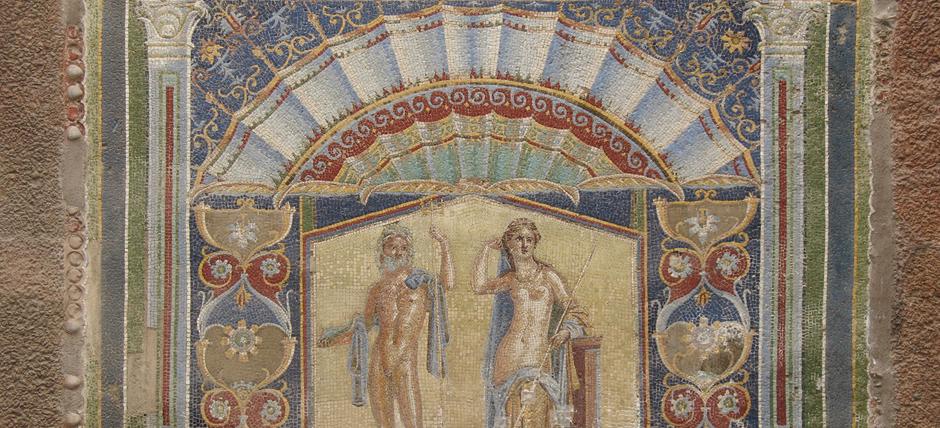 Ancient Herculaneum was never quite forgotten but the Roman city was not ‘rediscovered’ until 1709 when a farmer digging a well, found some marbles; later it was clear that he had discovered a Roman theatre. Before long King Charles of Bourbon had taken over the excavations, which were continued by his successors who were interested in finding art works to display at the Royal Palace at Portici. Open-air excavation began under the guide of the archaeologist Amedeo Maiuri. Most of the Roman city that can be visited today, was brought to light right in that period. Part of Maiuri’s approach was the idea of an open-air museum, where he displayed the archaeological finds in some of the buildings to illustrate that time Roman life.
Ancient Herculaneum was never quite forgotten but the Roman city was not ‘rediscovered’ until 1709 when a farmer digging a well, found some marbles; later it was clear that he had discovered a Roman theatre. Before long King Charles of Bourbon had taken over the excavations, which were continued by his successors who were interested in finding art works to display at the Royal Palace at Portici. Open-air excavation began under the guide of the archaeologist Amedeo Maiuri. Most of the Roman city that can be visited today, was brought to light right in that period. Part of Maiuri’s approach was the idea of an open-air museum, where he displayed the archaeological finds in some of the buildings to illustrate that time Roman life.
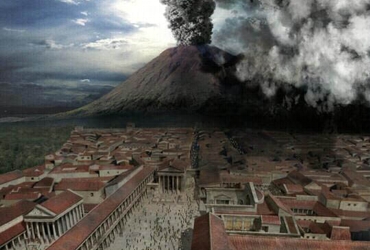 Unfortunately, these displays barely outlived Maiuri at Herculaneum and the exibition was gradually dismantelled, with the finds being taken into storage for protection. Gradually the site fell into a state of decay and it was only in 2001 that the gravity of this situation was recognized by the Packard Humanities Institute which launched a conservation project in partnership with the local heritage authority in order to find new ways for the maintenance of the site. Since 1997 the archeological site of Herculaneum, with Pompeii and the villas ofOplontis, has been added in the list of UNESCO World Heritage.
Unfortunately, these displays barely outlived Maiuri at Herculaneum and the exibition was gradually dismantelled, with the finds being taken into storage for protection. Gradually the site fell into a state of decay and it was only in 2001 that the gravity of this situation was recognized by the Packard Humanities Institute which launched a conservation project in partnership with the local heritage authority in order to find new ways for the maintenance of the site. Since 1997 the archeological site of Herculaneum, with Pompeii and the villas ofOplontis, has been added in the list of UNESCO World Heritage.
“It is far from easy to determine whether she [Nature] has proved to man a kind parent or a merciless stepmother.” - Pliny the Elder
➯ Naples to EAT 😜 👌 ...Pizza 🍕
There are not many nations that can say their national dish has become an international phenomenon. Italy has got two, pasta and, of course, pizza.
 The word "PIZZA" is thought to derive from the Latin word "pinsa", meaningflatbread.
The word "PIZZA" is thought to derive from the Latin word "pinsa", meaningflatbread.
A legend suggests that Roman soldiers gained a taste for Jewish Matzoth while stationing in Palestine and developed a similar food after returning home. The introduction of the Indian Water Buffalo gave pizza another dimension with the production of mozzarella cheese. Even today, the use of fresh "mozzarella di bufala"(fresh soft cheese produced from buffalo milk) in Italian pizza cannot be replaced. The introduction of tomatoes 🍅 into Italian cuisine in the 18th century finally gave us the final modern version of Italian "pizza verace" . By 1830 the "Antica Pizzeria Port'Alba" of Naples had become the first real pizzeria and it is still producing excellent pizza. The popularpizza Margherita owes its name to Italian Queen Margherita who, in 1889 , visited the Pizzeria Brandi in Naples. The Pizzaiolo (pizza maker) Raffaele Esposito created a pizza for the Queen that contained the three colors of the new Italian flag: red for tomato, white for the mozzarella and green for fresh basil. Pizza Marinara (born 1734) is another traditional Neapolitan pizza with tomato sauce, oregano and lots of garlic. It is a "must" to eat pizza by your hands!
produced from buffalo milk) in Italian pizza cannot be replaced. The introduction of tomatoes 🍅 into Italian cuisine in the 18th century finally gave us the final modern version of Italian "pizza verace" . By 1830 the "Antica Pizzeria Port'Alba" of Naples had become the first real pizzeria and it is still producing excellent pizza. The popularpizza Margherita owes its name to Italian Queen Margherita who, in 1889 , visited the Pizzeria Brandi in Naples. The Pizzaiolo (pizza maker) Raffaele Esposito created a pizza for the Queen that contained the three colors of the new Italian flag: red for tomato, white for the mozzarella and green for fresh basil. Pizza Marinara (born 1734) is another traditional Neapolitan pizza with tomato sauce, oregano and lots of garlic. It is a "must" to eat pizza by your hands!
"Aiutate, ca Dio t’aiuta!"
God helps those who help themselves!
It means that you don't just wait for good things to happen. Work hard to achieve your goals.
ARE YOU CUЯIOUS? 🔎 Think about...
...Pulcinella! 🎭 😁

"Comm'è bella, comm'è bella 'a città 'e Pulecenella" (how beautiful is Pulcinella's city) says a well-know Neapolitan song. Naples is beautiful indeed, and Pulcinella is its mascot with no doubt. The mask, born at the beginning of the 16th century and created by a farmer from Acerra, Puccio D'Aniello, is the embodiment of the Neapolitan spirit: crafty, spontaneous and generous. Pulcinella wears an oversized white gown, white pants and a little white hood, together with a black mask half covering his face (just his eyes and an "important" Roman nose). He is childish and has a funny stride, but he is especially famous for his inability to keep secrets: in our popular culture, a "Pulcinella's secret" is an "open secret", something that everybody knows! But there's much more in this figure than just a funny guy: his mask represents his people's rebellion against upper-middle class tyranny, their irony and their lust for life in spite of obstacles...
"Nesciuno nasce ‘mparato."
Nobody was born without the need of learning.
It means thay you aren’t able to do anything if you have never done it before and you don’t need to worry about that because you can always learn in your life!
➯ Naples to EAT 😜 👌 ...Sfogliatelle
The great theatre actor and author Eduardo De Filippo once said:
“When the night falls and your heart sinks deep, eat a sfogliatella and your heart will soar!”
 Sfogliatelle are unquestionably the sweet symbol of Naples. The queen 👑is the "SFOGLIATELLA RICCIA" (curly), made with a soft, flaky dough and filled with a mixture of ricotta, semolina, sugar, cinnamon, eggs and some candied citrus. Its sister, on the other hand, is known as “FROLLA” (smooth). "Riccia"and "frolla" have two cousins as well: one is the “Santa Rosa”, a riccia with custard cream and wild cherries in syrup on top, the other is the “Coda d’aragosta”, whose shape reminds a lobster tail. The origins of sfogliatelle are not documented, therefore controversial. In any case, the legend of what happened is roughly the same: a nun in the kitchen had some leftovers of semolina cooked in milk, she added some candied dried fruit, sugar and ricotta, wrapped the filling between two puff pastries softened with lard and baked it.
Sfogliatelle are unquestionably the sweet symbol of Naples. The queen 👑is the "SFOGLIATELLA RICCIA" (curly), made with a soft, flaky dough and filled with a mixture of ricotta, semolina, sugar, cinnamon, eggs and some candied citrus. Its sister, on the other hand, is known as “FROLLA” (smooth). "Riccia"and "frolla" have two cousins as well: one is the “Santa Rosa”, a riccia with custard cream and wild cherries in syrup on top, the other is the “Coda d’aragosta”, whose shape reminds a lobster tail. The origins of sfogliatelle are not documented, therefore controversial. In any case, the legend of what happened is roughly the same: a nun in the kitchen had some leftovers of semolina cooked in milk, she added some candied dried fruit, sugar and ricotta, wrapped the filling between two puff pastries softened with lard and baked it.
"Senza denare nun se cantano messe."
Without money noboby will sing in the mass choir.
It means that without money, people do not do anything. ×💰 ×🎶
💸 GALLERIA UMBERTO I 🏬
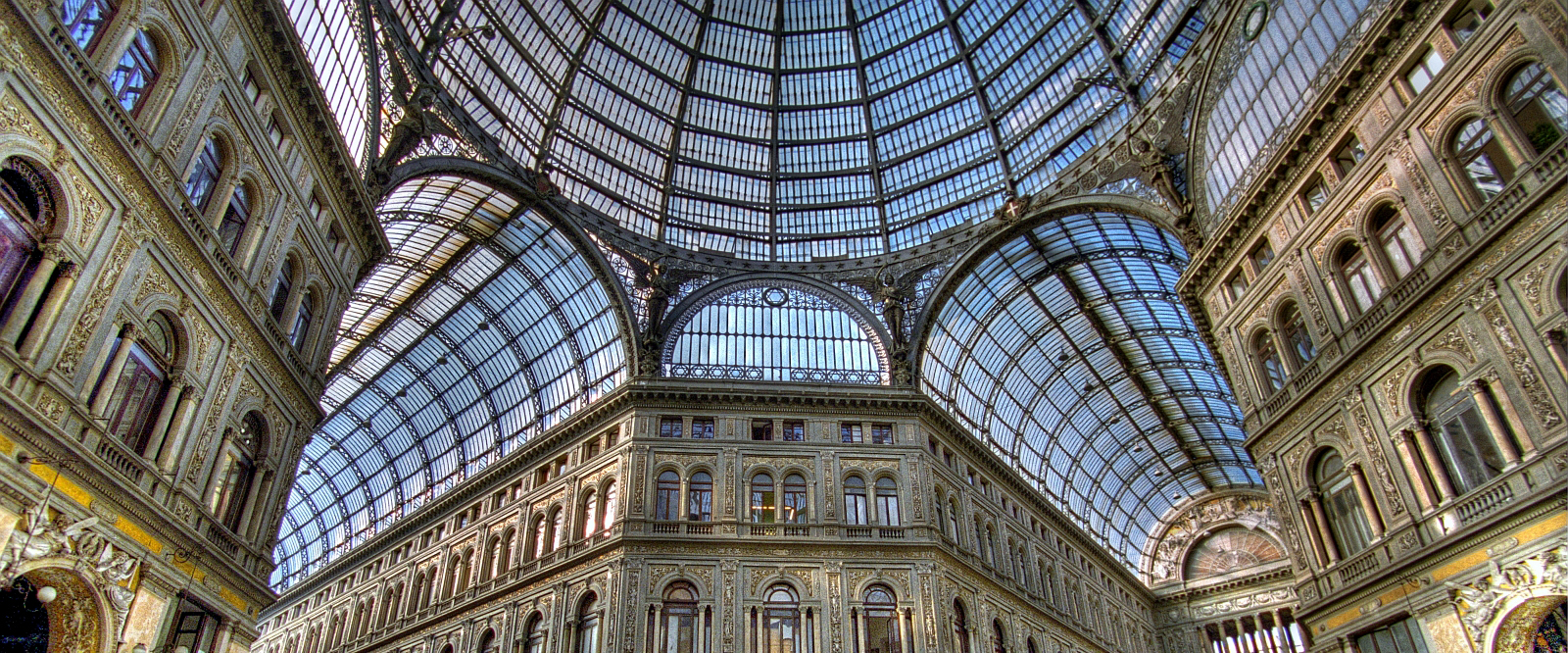 The Galleria Umberto I is a commercial gallery built in Naples between 1887 and 1890. Since its construction, it immediately became a fundamental commercial pole of the city of Naples, also because it is close to important cultural and political places. This Gallery has entertained for over 50 years the "sciusciàs", the shoeshiners of the city. To have the shoes cleaned inside the gallery was a custom that only the "chic", elegant men of the city of Naples could afford. Today this "rite" has disappeared, even if a last sciuscià has remained, a "veteran", and he keeps on the tradition at the entrance of the Gallery. Inside the Gallery,
The Galleria Umberto I is a commercial gallery built in Naples between 1887 and 1890. Since its construction, it immediately became a fundamental commercial pole of the city of Naples, also because it is close to important cultural and political places. This Gallery has entertained for over 50 years the "sciusciàs", the shoeshiners of the city. To have the shoes cleaned inside the gallery was a custom that only the "chic", elegant men of the city of Naples could afford. Today this "rite" has disappeared, even if a last sciuscià has remained, a "veteran", and he keeps on the tradition at the entrance of the Gallery. Inside the Gallery,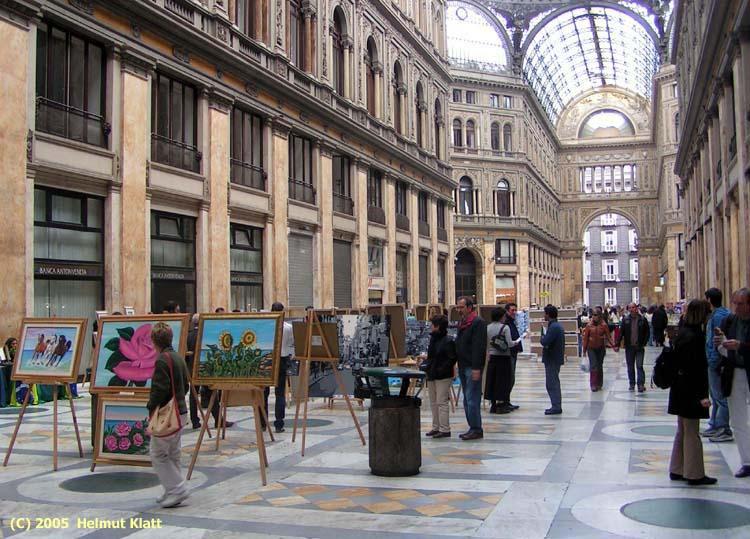 structured onthree floors, the first two are almost entirely used for commercial activities in Gallery and a Coral Museum, while the last floor is used for private residences or hotels. In 1886 the first cinema of the city was built inside the Gallery. It was also the first cinema in Italy, where the first films by Lumière brothers could be seen. The Gallery every year is used for welcoming a huge Christmas tree, on which, as from rite, letters of "desire" and "hope" of the citizens are attached.
structured onthree floors, the first two are almost entirely used for commercial activities in Gallery and a Coral Museum, while the last floor is used for private residences or hotels. In 1886 the first cinema of the city was built inside the Gallery. It was also the first cinema in Italy, where the first films by Lumière brothers could be seen. The Gallery every year is used for welcoming a huge Christmas tree, on which, as from rite, letters of "desire" and "hope" of the citizens are attached.
The Royal Gardens 🍃

The